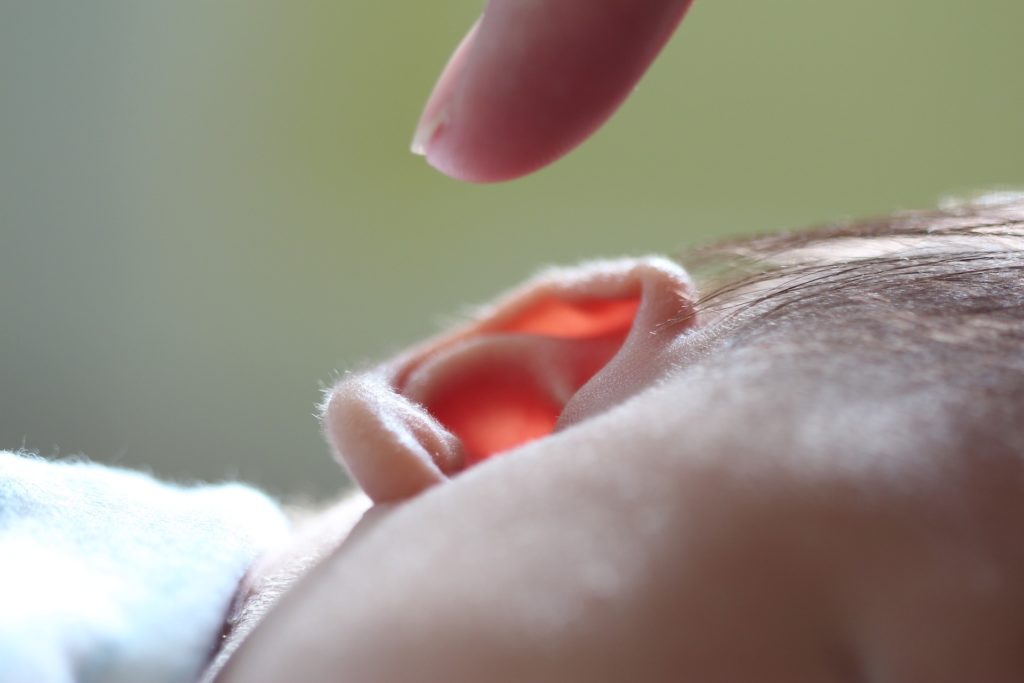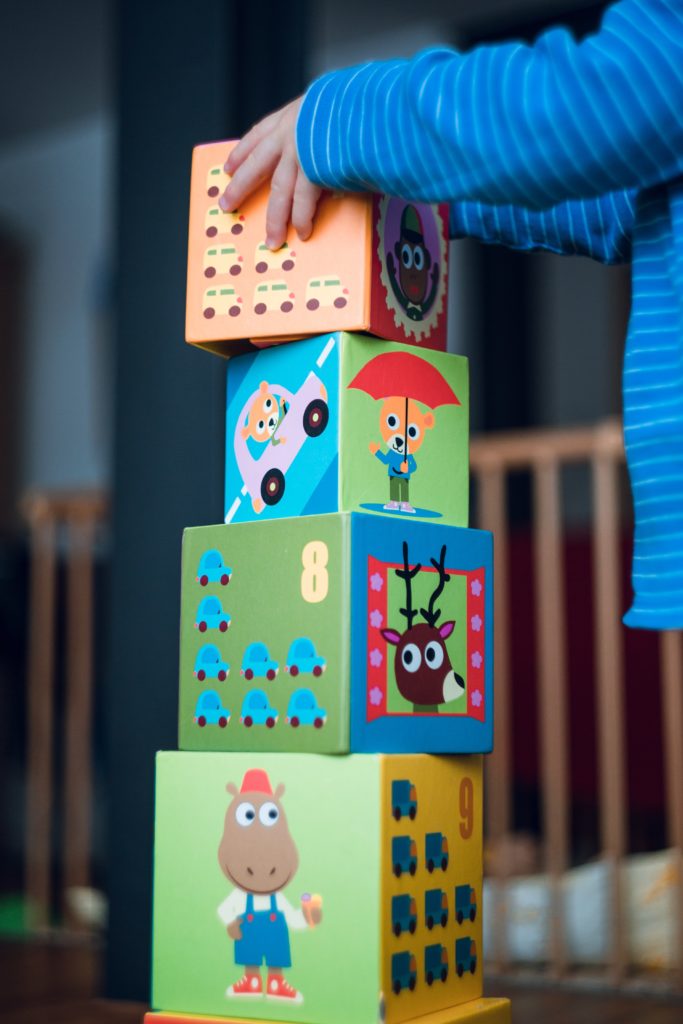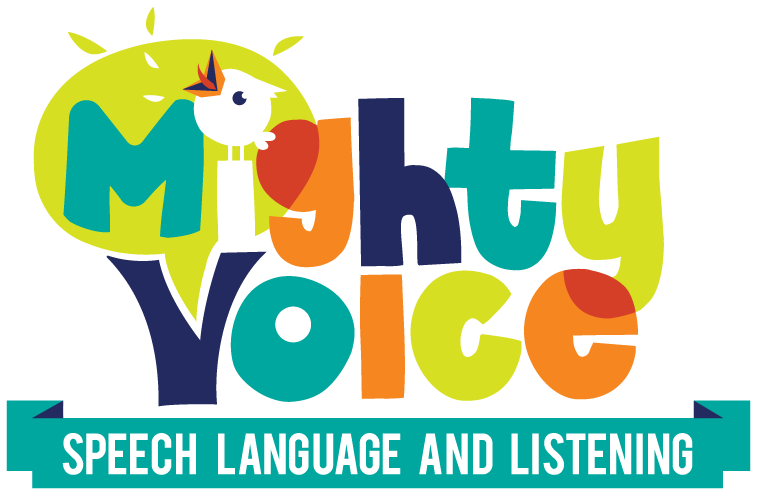This is one of the questions I hear often from parents…if they’re not talking yet, how do you evaluate speech and language skills in a baby? It’s a great question. If you *only* consider talking, of course it wouldn’t make sense to evaluate babies, because, well, for the most part, they aren’t talking yet.
But, I wrote about how communication is SO much more than just talking. We can evaluate what a baby’s hearing and understanding, what kind of sounds they’re making, what kind of interactions or turn-taking behaviors they’re showing with their caregivers, how much eye contact and social reciprocity (back and forth) they do with their caregivers…there is a lot we can look at!
Every speech language pathologist will do an evaluation differently, but here are the key features that are present for every speech and language evaluation I do for a baby.

Hearing Screening
You’ll hear me talk about hearing screening often on this blog because it’s *important.* ASHA (the American Speech Language Hearing Association) recommends “Inclusion of hearing screening as part of any comprehensive speech-language evaluation.”
Too often I see this component getting overlooked by well meaning SLPs. But, because typically children learn speech and language through hearing, making sure that hearing system is intact is *key.* We know that even a minimal hearing loss, or a fluctuating hearing loss (like one that might stem from recurring ear infections), does impact speech and language development and so should be checked.
If a speech language pathologist doesn’t have access to audiologic screening equipment, they should be referring families to someone that does. In our state, our local School for the Deaf offers free hearing screenings for all children in our state, which is where I refer families.
Parent Interview/Report
With babies, a lot of the information I gather during an evaluation comes from the parent. You are the expert on your child, and let’s be honest–a 12 month old who is brought into a new therapist’s office at nap time may just not be in the mood to show off their best skills. So we often rely on parents to tell us about what a child is or isn’t doing at home.
Some of the questions I ask parents come from the standardized test we’re using (more on that below), but I often have my own questions as well. I like to know things like whether or not your child is showing frustration when trying to communicate, or how they tell you they want or need something. I also want to know what kinds of play and activities you’re doing at home already, and what your child enjoys.

Standardized Test
It sounds crazy, but yes, I do sometimes do a standardized test with babies. Don’t worry, your 10 month old won’t be asked to bubble in circles with a #2 pencil. Instead, these tests are usually a combination of questions asked of the parents and tasks that the therapist does with the child.
Now, a totally legitimate question is why do you do a standardized test with a baby? Honestly, sometimes we do it because it is required. Some payor sources (insurance, etc.) requires us to show that a child is in need of therapy. One of the ways we can do this is by doing a standardized test.
These tests allow us to compare the speech and language skills of the child we’re evaluating with those of their peers that are the same age. Insurance companies and other payers often want to see that comparison to know that the therapy we’re going to provide is necessary.

Observation and Play
Anytime I evaluate a baby or young toddler, we’re going to play. Play is a child’s work, and I want to see how they’re doing that. I usually have a variety of toys available, and definitely welcome whatever toys you have with you as well.
I might ask the parent to play with the child while I observe. As an introvert, I totally get why this might feel weird for a parent, but I promise–I’m watching your child, not you. And, I’ll be honest–I can’t really play and take good notes on what your child is doing at the same time. If you play with your child, it allows me to watch them more carefully and think about what they’re doing, where they might need some support, and how we might think about doing that.
Also, observing a child play gives me a better picture of their “real life skills.” When you ask a child to do a specific task in a therapist’s office, it doesn’t always tell the whole story. Maybe they just woke up and don’t feel like it. Maybe they don’t like the particular activity you chose. Maybe they have their own idea about what they want to do.
If we let them play, and choose how they play, we can sometimes get a better picture of their skills.
What If My Child Cries/Screams/Needs a Snack/Has a Dirty Diaper/Refuses, etc.
Okay, so I totally get this one too…I’m a mom. Honestly? This stuff happens, and it’s no big deal. We adjust. We get them a snack, change their diaper, redirect, etc. Any therapist who works with children is used to this, and rest assured, your child is not the first one who’s sneezed on us or thrown the toys. That is perfectly normal and expected.
After the Evaluation
What usually happens after an evaluation is that the therapist takes all of the information gathered–your answers to their questions, the test data, anything they observed in the session, etc., and turns it into a written report. That report will usually tell you where your child is with his/her speech and language skills, how that compares to other children their age, and what the therapist is recommending.
Sometimes that report will be sent to your insurance company, or maybe just to you, and if therapy is recommended, we can get started.
